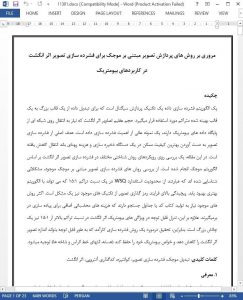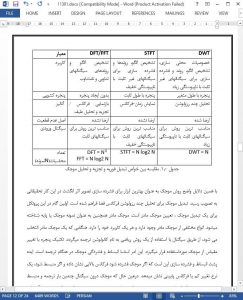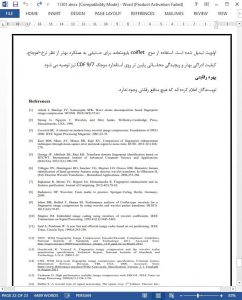Abstracts
A data compression algorithm is a signal processing technique used to convert data from a large format to one optimized for compactness. Huge volumes of fingerprint images that need to be transmitted over a network of biometric databases are an excellent example of why data compression is important. The cardinal goal of image compression is to obtain the best possible image quality at a reduced storage and transmission bandwidth costs. In this paper, a review of different methodological approaches to fingerprint image compression based on the wavelet algorithm is conducted. From the survey of the existing wavelet-based image compression methods, the problems that have been identified include: the limitation of WSQ standard to a compression ratio of 15:1 which could be improved with better algorithm. High complexity of image encoding process of the existing techniques is also a problem. Most of the existing methods require the generation of codebooks or lookup tables which require additional computational cost for implementation. Additionally, significant degradation in the biometric features of fingerprint at compression ratio higher than 15:1 remains a major challenge. Therefore, the investigation of an efficient compression method that can significantly reduce fingerprint image size while preserving its biometric properties (the core, ridge endings and bifurcations) is justified. 1 Introduction Images contain large amount of information that requires huge storage space and large transmission bandwidth. Image data processing and storage attract cost and the cost is directly proportional to the size of data. In spite of the advancements made in mass storage and processing capacities, these have continued to fall below capacity requirements of application systems [1]. Therefore, it is advantageous to compress an image by storing only the essential information needed to reconstruct the image. An image can be thought of as a matrix of pixel (or intensity) values and in order to compress it, redundancies must be exploited. Image compression is the general term for the various algorithms that have been developed to address these problems.
3 Conclusion
In this paper, a review of different methodological approaches to fingerprint image compression based on the wavelet algorithm is conducted. From the survey of the existing wavelet-based image compression methods, the problems that have been identified include: the limitation of WSQ standard to a compression ratio of 15:1 which could be improved with better algorithm. High complexity of image encoding process of the existing techniques is also a problem. Most of the existing methods require the generation of codebooks or lookup tables which require additional computational cost for implementation. Additionally, significant degradation in the biometric features of fingerprint at compression ratio higher than 15:1 remains a major challenge. Therefore, the signal processing capability to efficiently process fingerprint images in transform domain, quantize and encode them for optimized compression to achieve cost-effective data storage and transmission in biometric systems has become a priority. The use of biorthogonal coiflet wavelets to achieve superior performance in terms of better rate-distortion, better perceptual quality and lower computational complexity over the standard CDF 9/7 wavelet is therefore recommended.











